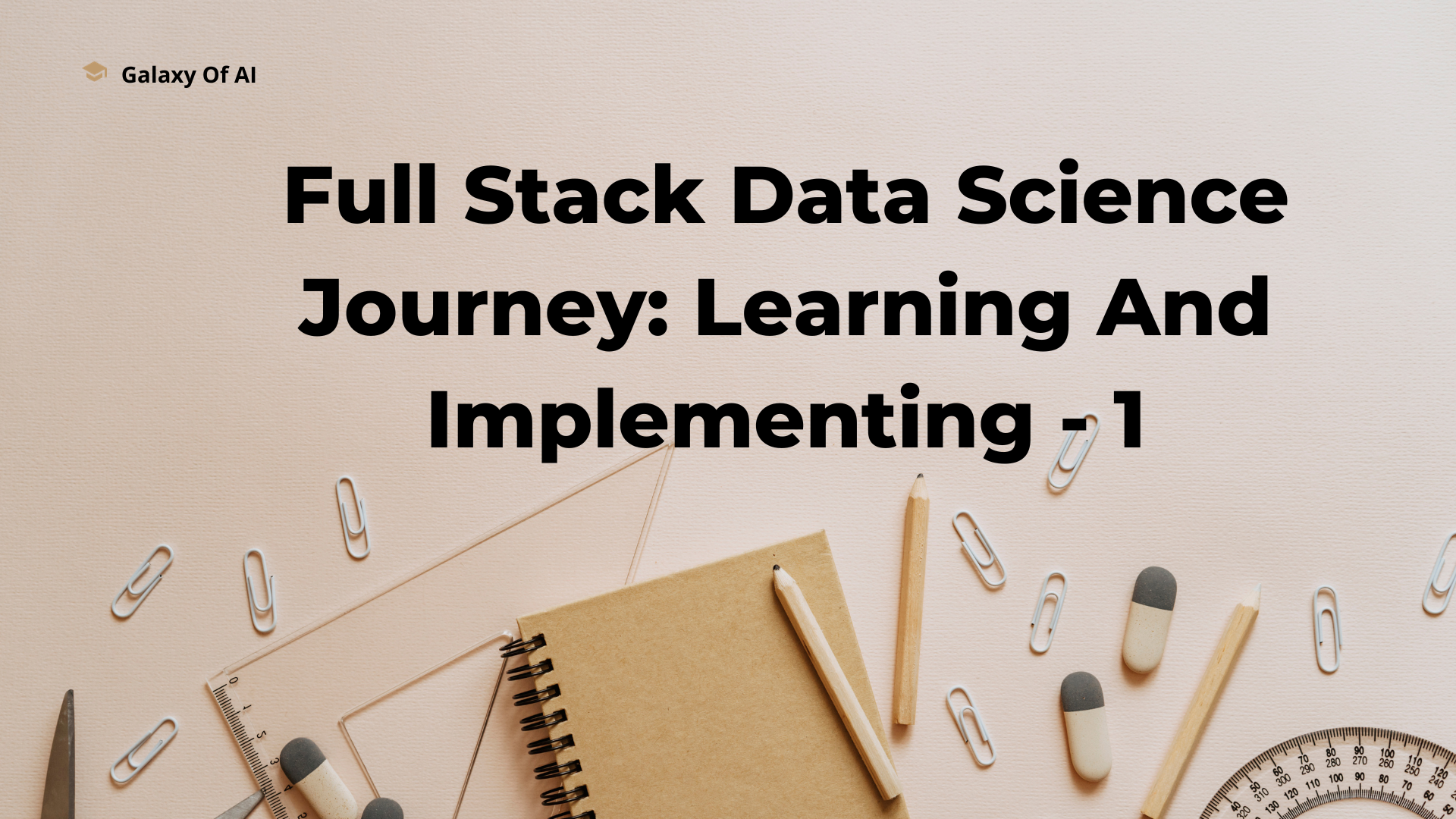Hello Learners…
Welcome to the blog…
We are starting the series of learning full stack data science by implementing using python and discussing every required thing for the full stack data science.
Table Of Contents
- Introduction
- Full Stack Data Science Journey: Learning And Implementing – 1
- Summary
- References
Introduction
In this post, we discuss Full Stack Data Science Journey: A Roadmap for Learning And Implementing this is the series of learning and implementing for full stack data science.
This is a full-stack data science journey where we will learn all the stack required to work in data science, data analytics, and the big data industry including ML ops and cloud infrastructure.
NOTE: Anyone who wants to join this series of learning joins the discussion Forum.
Discussion Forum:
Github:
Full Stack Data Science Journey: Learning And Implementing – 1
What we learn in this series,
Python
- Python, a versatile programming language, serves as the foundation for data science, machine learning, and more, thanks to its simplicity and extensive libraries.
- https://galaxyofai.com/full-stack-data-science-journey-python-installation-and-setup-2/
Mathematics
- Mathematics plays a fundamental role in the field of data science, as it provides the essential tools and concepts required to analyze and interpret data effectively.
- Two crucial areas of mathematics that find extensive use in data science are vector operations and matrix operations.
Statistics
- Statistics provides the crucial tools for data analysis and decision-making, helping uncover insights from data through techniques like hypothesis testing and regression.
Exploratory Data Analysis(EDA)
Feature Engineering
Feature Selection
Machine learning
- Machine learning empowers systems to learn patterns from data and make predictions or decisions without explicit programming, revolutionizing industries from healthcare to finance.
Deep learning
- Deep learning, a subset of ML, focuses on neural networks to tackle complex tasks like image recognition and natural language understanding, driving AI advancements.
Computer vision
- Computer vision involves teaching machines to interpret visual data, enabling applications like facial recognition, object detection, and autonomous vehicles.
Natural language processing
- NLP enables machines to understand, interpret, and generate human language, driving advancements in chatbots, language translation, and sentiment analysis.
Data Analytics
- Data analytics harnesses data to discover trends, gain insights, and inform decision-making, crucial for business intelligence and strategy.
Big data
- Big data technologies handle vast and complex datasets, enabling organizations to extract value and insights from massive data stores.
ML ops
- ML Ops streamlines the deployment and management of machine learning models, ensuring efficiency, scalability, and reliability in AI applications.
Cloud
- Cloud computing platforms like AWS, Azure, and GCP provide scalable infrastructure and services for data storage, processing, and AI model deployment.
LLMs (Large Language Models)
- Large Language Models like GPT-3 (Generative Pre-trained Transformer 3) are state-of-the-art natural language processing AI models.
- They have the ability to understand and generate human-like text based on the input they receive.
- LLMs are pre-trained on vast amounts of text data and can perform a wide range of natural language understanding and generation tasks, including text completion, translation, summarization, and question-answering.
- These models have garnered significant attention for their potential applications in various fields, from content generation to chatbots and virtual assistants.
Generative AI
- Generative AI refers to a class of artificial intelligence models and techniques that are designed to generate data, often in the form of text, images, or other media, that is similar to what humans produce.
- These models can create new content, such as realistic images, natural language text, or even music, without direct human input.
- Generative AI is a rapidly advancing field, with applications ranging from creative content generation and art to data augmentation and enhancing the capabilities of virtual assistants.
- GPT-3, mentioned earlier, is an example of a generative AI model that excels in generating human-like text based on context and input.
Data structure and algorithm
- A strong grasp of data structures and algorithms is essential for efficient data processing and problem-solving in software development.
Architecture
- Understanding system architecture is crucial for designing robust, scalable, and high-performance solutions for data-driven applications.
Domain wise project
- Domain-specific projects apply data science skills to real-world problems in fields like healthcare, finance, or e-commerce, showcasing practical expertise.
Databases
- Databases are the backbone of data storage and retrieval, with SQL and NoSQL options, essential for data-driven applications.
Interview Preparation
- Interview preparation involves honing technical and problem-solving skills, mastering data science concepts, and practicing common interview questions for landing data science roles.
In this series, we try to learn everything that is required in the Data Science field. Which helps everyone to learn and be prepared for a Data Science Or Machine Learning Career.
Github :
Summary
Remember that learning is a continuous process, and the field of data science is always evolving. Adapt your roadmap as needed, stay curious, and never stop learning. Good luck on your Full Stack Data Science journey!
Happy learning And Keep Learning
Thank you…
